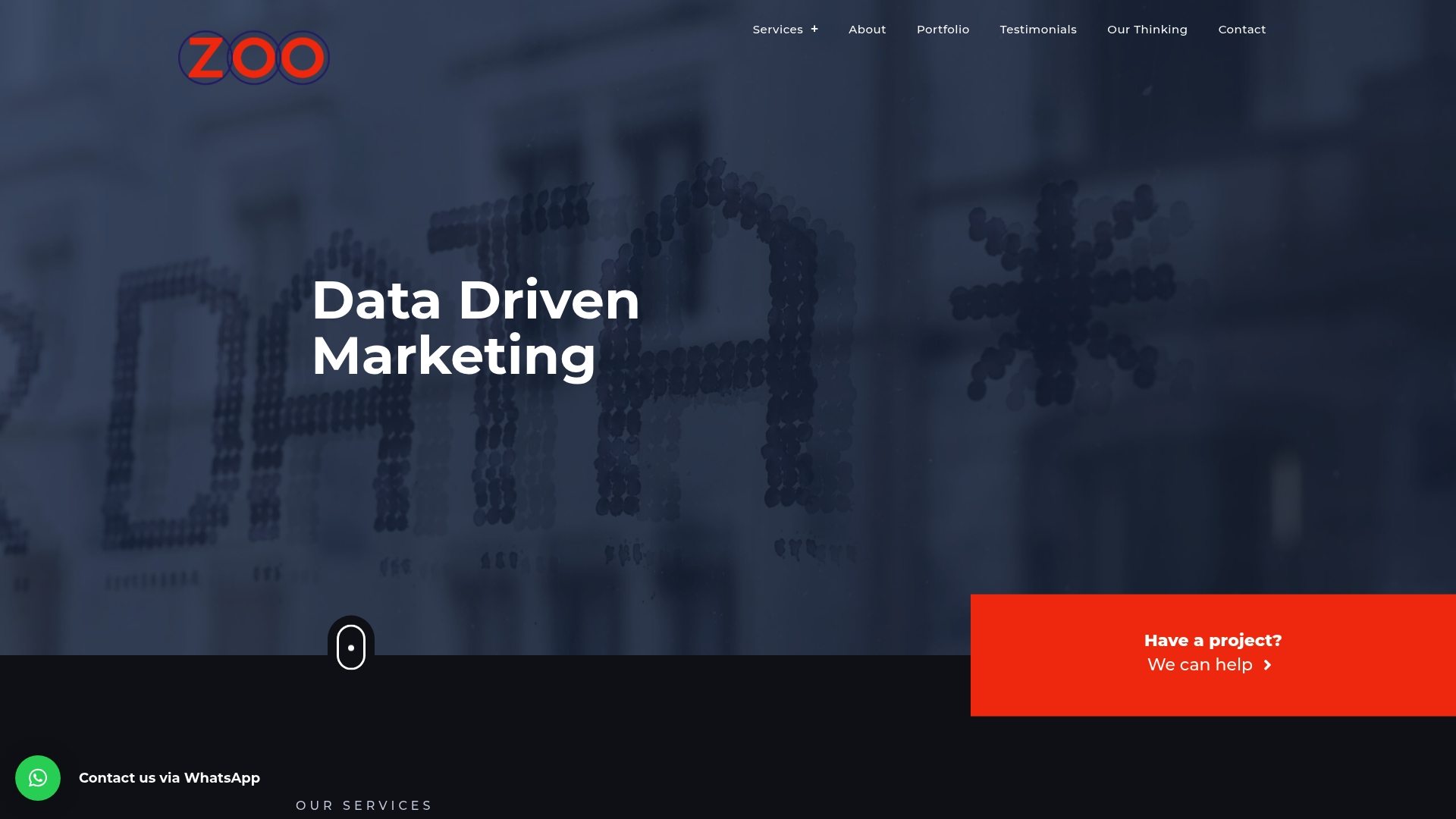Did you know that companies with a strong focus on customer experience see up to 80 percent higher revenue growth compared to their competitors? Understanding the full path your customers take is not just about tracking purchases, but capturing every thought, feeling, and touchpoint along the way. By mapping the customer journey, organizations unlock a clear view into what shapes loyalty and drives improvement, leading to smarter decisions and a better experience for every customer.
Table of Contents
- Defining Customer Journey Mapping And Core Concepts
- Types Of Customer Journey Maps And Key Differences
- Essential Steps To Create An Effective Journey Map
- Practical Applications And Integration With Marketing
- Common Mistakes And How To Avoid Them
Key Takeaways
| Point | Details |
|---|---|
| Understanding Customer Journey Mapping | It is a strategic visual tool that outlines a customer’s complete experience with an organization, focusing on their emotions, needs, and interactions. |
| Types of Journey Maps | Different maps, such as Current State, Future State, and Persona-Specific, provide focused insights depending on the customer context and interaction scenario. |
| Steps for Effective Mapping | Key steps include defining the customer persona, identifying touchpoints, analyzing emotional journeys, and prioritizing potential improvements. |
| Common Mistakes to Avoid | Businesses should avoid pitfalls like undefined scope and static mapping by treating journey maps as dynamic documents that require continuous iteration and data integration. |
Defining Customer Journey Mapping and Core Concepts
A customer journey map is a strategic visual representation that tracks a customer’s complete experience with an organisation from initial awareness through multiple interaction points. According to digital.gov, these maps describe a customer’s entire journey, including interactions both before and after direct contact with the business.
The core purpose of journey mapping is to understand and document the customer’s perspective, emotions, and needs throughout their entire engagement process. By creating these detailed visualisations, businesses can identify pain points, improve customer experience, and design more effective touchpoint strategies. Journey maps typically capture critical elements such as:
- Emotional states at different stages
- Customer actions and interactions
- Potential obstacles or friction points
- Opportunities for service improvement
Effective journey maps go beyond simple transactional tracking. They provide deep insights into the customer’s psychological and practical experience, helping organisations align their services with genuine customer expectations. As research from USA.gov highlights, these maps encompass key interactions, attitudes, and underlying customer needs, transforming raw data into actionable strategic intelligence.
Types of Customer Journey Maps and Key Differences
Customer journey maps are not one-size-fits-all tools, but rather dynamic frameworks that can be tailored to specific business needs and customer interaction scenarios. According to GeeksforGeeks, these maps can vary significantly based on the specific process or persona being analyzed, covering diverse stages like Awareness, Onboarding, Usage, and Support.
Typically, organisations develop different types of journey maps to capture unique perspectives and insights:
Here’s a summary of the main types of customer journey maps:
| Map Type | Main Focus | When to Use |
|---|---|---|
| Current State Map | Existing experiences & touchpoints | Analyse current customer journey |
| Future State Map | Desired improvements & future scenarios | Plan service enhancements |
| Day in the Life | Customer’s daily activities | Understand overall customer context |
| Persona-Specific | Distinct customer segments | Tailor experience to each persona |
- Current State Maps: Visualize existing customer experiences and interactions
- Future State Maps: Outline potential improvements and desired customer journeys
- Day in the Life Maps: Track comprehensive customer activities beyond specific product interactions
- Persona-Specific Maps: Tailored to specific customer segments or user profiles
Research from USA.gov highlights that journey maps can differ in scope, ranging from channel-specific representations to comprehensive cross-channel perspectives. The key distinction lies in their focus: some maps zero in on precise touchpoints, while others provide a holistic view of the entire customer experience, including interactions before and after direct engagement with the organisation.

Essential Steps to Create an Effective Journey Map
Creating an impactful customer journey map requires a strategic and methodical approach. According to GeeksforGeeks, the process involves several critical steps that transform raw customer interactions into meaningful insights.
The core steps for developing a comprehensive journey map include:
- Define the Persona: Select a specific customer segment or user profile to ensure focused and relevant mapping
- Identify Touchpoints: Document every interaction point between the customer and your organization
- Create Visual Timeline: Develop a chronological representation of the customer’s experience
- Analyze Emotional Journey: Track customer emotions, pain points, and key moments of interaction
- Prioritize Improvements: Identify and rank potential enhancements based on customer experience insights
Research from digital.gov emphasizes that effective journey mapping goes beyond simple documentation. It involves continuously updating personas, analyzing cross-channel data, and using insights to inform web design, content strategy, and service delivery. The ultimate goal is not just to map the journey, but to create a living document that evolves with your understanding of customer needs and experiences.
Practical Applications and Integration With Marketing
Customer journey mapping is a powerful tool that bridges the gap between marketing strategy and actual customer experiences. According to digital.gov, journey maps can profoundly inform web design, content strategy, and service delivery by providing granular insights into how customers interact with an organization across different channels.
In marketing, journey mapping enables businesses to:
- Personalize Marketing Campaigns: Develop targeted messaging based on specific customer stages and emotional experiences
- Optimize Channel Performance: Identify strengths and weaknesses in different marketing channels
- Improve Customer Engagement: Create more resonant and meaningful touchpoints
- Align Sales and Marketing Efforts: Ensure consistent communication throughout the customer lifecycle
Research from USA.gov highlights that by understanding cross-channel customer journeys, organizations can dramatically enhance their marketing effectiveness. This involves analyzing interactions across websites, contact centers, and digital platforms to create more integrated, responsive marketing strategies that truly meet customer needs and expectations. With understanding integrated marketing communications, businesses can transform raw customer data into actionable marketing insights that drive meaningful engagement and growth.
Common Mistakes and How to Avoid Them
Creating an effective customer journey map requires careful attention to detail and a strategic approach. According to GeeksforGeeks, businesses often fall into several common traps that can undermine the effectiveness of their journey mapping efforts.
The most prevalent mistakes in customer journey mapping include:
- Undefined Scope: Failing to establish clear boundaries and objectives for the mapping process
- Incomplete Touchpoint Analysis: Overlooking critical interaction points across different channels
- Emotional Blindness: Neglecting to capture and understand the customer’s emotional experience
- Static Mapping: Treating journey maps as fixed documents instead of dynamic, evolving tools
- Data Isolation: Not integrating insights from multiple sources and departments
Research from digital.gov emphasizes the importance of comprehensive data analysis to avoid information disconnects. The key to avoiding these pitfalls is continuous iteration – regularly updating your journey map with new insights, cross-referencing data from different channels, and maintaining a holistic view of the customer experience. By treating your journey map as a living document and fostering a culture of ongoing customer understanding, businesses can transform potential mistakes into opportunities for meaningful improvement.
Unlock the Power of Customer Journey Mapping with Zoo Digital
Understanding your customer’s emotions and touchpoints is key to turning pain points into opportunities. This article highlights the importance of capturing every interaction and analysing customer behaviour to create dynamic, evolving journey maps. At Zoo Digital, we specialise in helping businesses like yours bring these insights to life through tailored digital marketing solutions including Google Ads, Meta Ads, and Hubspot CRM management.

Ready to transform your customer journey into a growth engine? Visit Zoo Digital and discover how our data-driven marketing, automation tools, and expert web development can craft seamless experiences that truly resonate. Don’t wait to take your marketing to the next level start creating meaningful customer connections today.
Frequently Asked Questions
What is customer journey mapping?
A customer journey map is a strategic visual representation that tracks a customer’s complete experience with an organisation, from initial awareness through multiple interaction points. It helps businesses understand customer emotions, needs, and pain points throughout their engagement process.
What are the different types of customer journey maps?
The main types of customer journey maps include Current State Maps (focusing on existing customer experiences), Future State Maps (outlining desired improvements), Day in the Life Maps (understanding overall customer context), and Persona-Specific Maps (tailored to specific customer segments).
What are the critical steps in creating an effective journey map?
The essential steps for developing a comprehensive journey map include defining the persona, identifying touchpoints, creating a visual timeline, analyzing the emotional journey, and prioritizing potential improvements based on customer insights.
How can customer journey mapping improve marketing strategies?
Customer journey mapping can enhance marketing strategies by personalizing campaigns, optimizing channel performance, improving customer engagement, and aligning sales and marketing efforts to ensure consistent communication throughout the customer lifecycle.

